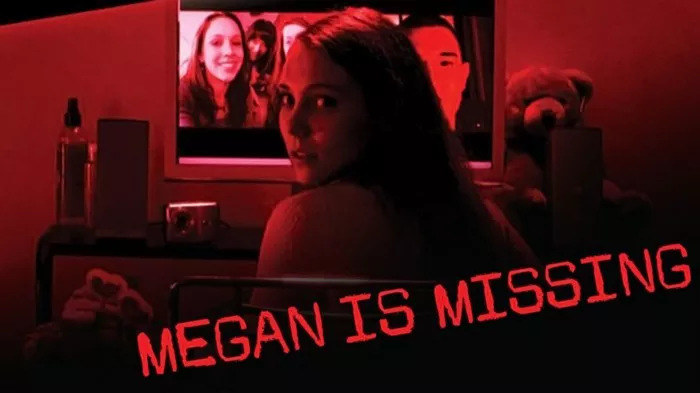In the realm of psychological horror films, “Megan is Missing” stands out as a chilling portrayal of the dangers lurking in the digital age. Directed by Michael Goi, this found-footage-style movie delves deep into the harrowing consequences of online interactions, teenage vulnerability, and the sinister facets of human nature. Released in 2011, the film continues to provoke intense reactions and discussions due to its graphic content and unflinching depiction of abduction, abuse, and exploitation. In this comprehensive analysis, we will explore the intricate layers of “Megan is Missing,” dissecting its plot, themes, and impact on viewers.
Unveiling the Narrative Tapestry
The story revolves around two teenage girls, Megan Stewart and Amy Herman, whose lives take a dark turn when they befriend a mysterious stranger online. Megan, portrayed as a popular and outgoing girl, initially appears carefree and adventurous. In contrast, Amy is depicted as introverted and insecure, relying heavily on her friendship with Megan for support and validation.
The film’s narrative unfolds through the lens of Amy’s video diary and recovered footage from smartphones and webcams. As the girls immerse themselves in the virtual world of social media, they encounter “Josh,” an enigmatic figure who befriends Megan and gradually gains her trust. Despite Amy’s initial skepticism, Megan becomes infatuated with Josh, leading her to arrange a secret meeting with him.
The tension escalates when Megan goes missing shortly after her rendezvous with Josh, leaving Amy frantic and desperate for answers. As Amy embarks on a quest to uncover the truth behind Megan’s disappearance, she delves into a nightmarish realm of deception, manipulation, and depravity. Along the way, she discovers disturbing revelations about Megan’s interactions with Josh and the grim realities of online grooming.
Exploring Themes of Vulnerability and Exploitation
At its core, “Megan is Missing” confronts the vulnerability of adolescents navigating the complexities of adolescence and digital connectivity. The film underscores the dangers posed by online predators who exploit the innocence and naivety of young individuals for nefarious purposes. Through Megan and Amy’s experiences, the narrative exposes the ease with which predators can manipulate their victims through deception, coercion, and psychological manipulation.
Moreover, the film delves into broader themes of trust, betrayal, and the fragility of human relationships. Megan’s unwavering trust in Josh serves as a cautionary tale, highlighting the repercussions of misplaced faith and the consequences of ignoring warning signs. Amy’s journey, marked by anguish and despair, reflects the profound impact of trauma and loss on the psyche of survivors.
Navigating the Ethical Quandaries
Critics and audiences alike have grappled with the ethical implications of “Megan is Missing,” particularly its graphic portrayal of violence and exploitation. The film’s unflinching depiction of abduction, sexual assault, and torture has sparked intense controversy and debate, with many condemning its shock value and gratuitousness.
While some argue that the film serves as a stark reminder of the harsh realities of abduction and abuse, others contend that its sensationalistic approach sensationalizes trauma and perpetuates harmful stereotypes. Additionally, concerns have been raised regarding the potential triggers and psychological impact on viewers, particularly adolescents and survivors of trauma.
Despite these criticisms, proponents of the film argue that its raw and unfiltered portrayal of violence is necessary to elicit a visceral response and provoke meaningful dialogue about the prevalence of online predation. They maintain that “Megan is Missing” serves as a wake-up call for parents, educators, and policymakers, urging them to address the pervasive risks associated with online interactions and enhance safeguards to protect vulnerable individuals.
The Legacy and Impact of “Megan is Missing”
Since its release, “Megan is Missing” has left an indelible mark on the horror genre, garnering a cult following and sparking ongoing discussions about its themes and imagery. Despite its modest budget and limited theatrical release, the film has achieved a lasting legacy through word-of-mouth promotion and online platforms.
Furthermore, “Megan is Missing” has inspired a renewed interest in found-footage horror and unconventional storytelling techniques. Its use of faux-documentary style and fragmented narrative structure has influenced subsequent films and television series, paving the way for innovative approaches to storytelling in the digital age.
However, the film’s controversial reputation continues to overshadow its artistic merits, with many viewers dismissing it as exploitative and sensationalistic. Despite its polarizing reception, “Megan is Missing” remains a provocative and thought-provoking exploration of the darkest recesses of human nature and the perils of online interactions.
Conclusion
“Megan is Missing” offers a disturbing yet compelling examination of the dangers lurking in the digital landscape. Through its unflinching portrayal of abduction, exploitation, and trauma, the film serves as a stark reminder of the vulnerabilities inherent in adolescent experiences. While its graphic content and controversial themes have sparked intense debate, its impact on the horror genre and cultural discourse cannot be denied.
As audiences continue to grapple with the film’s unsettling imagery and moral ambiguities, “Megan is Missing” stands as a testament to the enduring power of cinema to confront uncomfortable truths and challenge societal norms. Whether regarded as a cautionary tale or a cautionary tale, its legacy will endure as a provocative exploration of modern horrors and the human capacity for darkness.
























